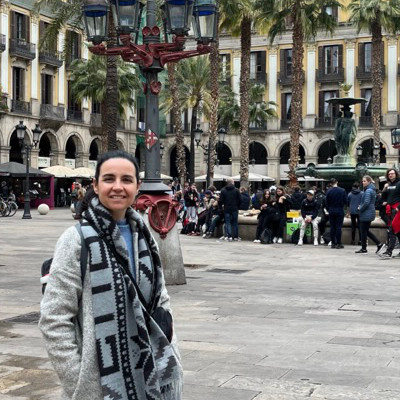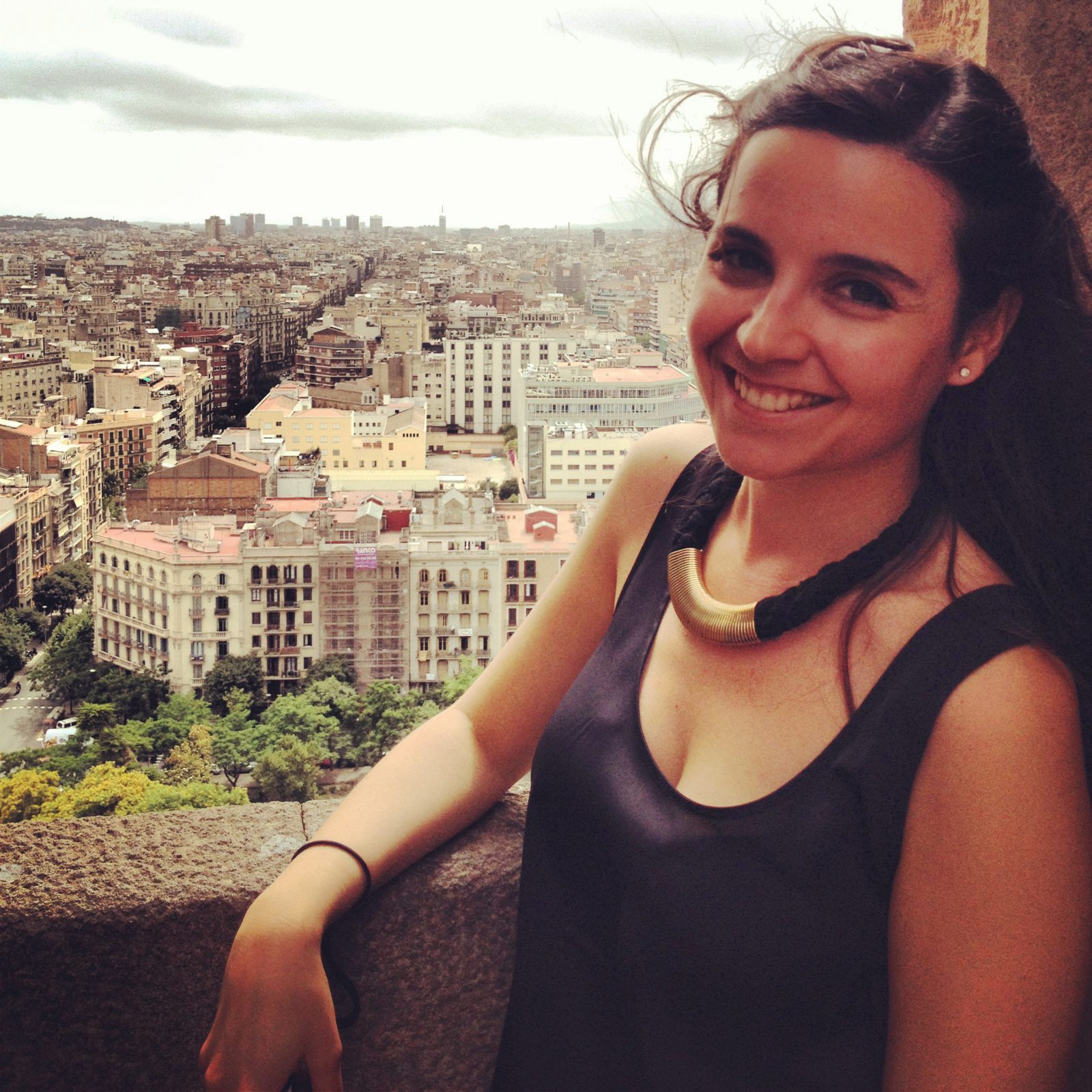Las Ramblas is one of the most famous promenades in the world and definitely a must-see for anyone visiting Barcelona for the first time. As you walk along the Ramblas, you’ll encounter all sorts of people among the flower and newspaper kiosks, fountains, and terraces: locals, tourists, beggars, artists, fakirs, dancers, living statues, football fans, and magicians. It’s a spectacle you certainly don’t want to miss!
What to See and Do at the Ramblas
The Ramblas is one of the main streets of Barcelona and one of the city’s most popular attractions. It’s a pleasant 1.3-kilometer pedestrian promenade that connects Plaça Catalunya with the old port and separates the Gothic Quarter from El Raval. Las Ramblas is always lively, full of people, street performers, and vendors. It’s a spectacle that you must see at least once during a visit to Barcelona.

My favorite walk along the Ramblas starts at Plaça Catalunya and ends at the Maremagnum shopping center. Between these points, there are plenty of spots and interesting sights to discover, which I’ll show you below.
Rambla de Canaletes
The first few meters of the Ramblas belong to Rambla de Canaletes. This has long been the meeting place for FC Barcelona supporters: when FC Barcelona wins a title, all fans gather around the Font de Canaletes fountain and celebrate the victory together.
It’s also interesting to know that according to legend, everyone who drinks from this fountain will return to Barcelona. Opposite the fountain is Restaurante Núria, which has been around since 1926 and was a pioneer in many ways, such as introducing beer serving, being open 24 hours a day, and offering take-away service.
On the first street to the right is Carrer Tallers, with many small (second-hand and vintage) shops, bars, and restaurants.

Rambla dels Estudis
Rambla dels Estudis was named after the various colleges that once stood here. The scientific academy at number 115 is the only one remaining.
One of the most beautiful modernist-style pharmacies in Barcelona, Farmàcia Nadal, is also located in this part of the Ramblas.
If you take Carrer del Bonsuccès, you’ll enter the Raval district. At Plaça dels Àngels, you’ll find the Museu d’Art Contemporani (MACBA) and many terraces and restaurants where you can enjoy a meal.
Carrer del Carme is also worth seeing. Here, you’ll find stores like Chöck for chocolate lovers and the Parròquia de la Mare de Déu de Betlem (an old church with a beautiful baroque facade).
Across from it is Portaferrissa Street, with many modern fashion stores and a hidden medieval fountain. This was also one of the city’s entrance gates in the 13th century. Next to it lies the Palau Moja, the only palace with arcades on La Rambla and a perfect shelter when it suddenly starts to rain.
This part of the Ramblas is also known as the “Rambla dels Ocells” since there are many bird and other animal stores.

Rambla de Sant Josep
The Rambla de Sant Josep, also known as the ‘Rambla de les Flors’ due to its many flower kiosks, has a unique history. Did you know that in the 19th century, the Rambla de les Flors was the only place in Barcelona where flowers were sold?
Some believe that the sale of flowers on the Ramblas began as a special custom among the market vendors at La Boqueria, who would give a flower as a gift to their customers with a purchase.

This area deserves special attention for its Palau de la Virreina (an 18th-century palace in Baroque and Rococo style now hosting free exhibitions), the Mercat de Sant Josep (also known as La Boqueria, one of the largest markets in the world), and the Pastelería Escribà (a delightful patisserie in modernist style).
At the height of Pla de la Boqueria (also known as Pla de l’Os), you suddenly walk over Joan Miró’s colorful mosaic from 1976, while on your left, you see the exotic Casa Bruno Quadros (also known as the House of Umbrellas) shining. Walk through Carrer del Cardenal Casañas to discover the cozy Plaça del Pi with its imposing church and lively terraces.
Additionally, on Rambla de Sant Josep, there’s a very special museum, Big Fun. A place where the craziest things can happen: an upside-down house, gigantic objects for photo ops, an adult ball pit… you name it! Highly recommended to visit with children or if you just want to have some fun.
Rambla dels Caputxins
With Rambla dels Caputxins begins the most touristic part of the Ramblas, signaling the need to hold your handbag a bit tighter. Along this part of the Ramblas, you can see the opera house Gran Teatre Liceu, built in 1846 on the site of a monastery.
The Café de l’Òpera, located opposite El Liceu, was formerly the meeting place for the bourgeoisie who attended the opera, and the café still breathes history.

Taking a left onto Carrer Ferran leads you into the heart of the Gothic Quarter and the municipal government. At Plaça Sant Jaume, you can see the buildings of the Generalitat de Catalunya (the palace of the Catalan government) and the Ajuntament de Barcelona (the city hall).
Nearby, you’ll find the famous and always lively Plaça Reial. Turning right at Carrer Nou de la Rambla, you’ll come across one of Gaudí’s first works, the fantastic Palau Güell.
Rambla de Santa Mònica
The final part of the Ramblas, Rambla de Santa Mònica, is named after the patron saint of the Order of the Augustinians, who founded a monastic community here in the 17th century. In that old monastery is now Arts Santa Mònica, a cultural institution with a variety of artistic performances.
Also located here at the end of the Ramblas are the Barcelona wax museum, Museu de Cera, the unique café Bosc de les Fades, and the maritime museum Museu Marítim, one of the best maritime museums in the world.
But the real star of the Rambla de Santa Mònica is undoubtedly the Columbus statue, which, thanks to its lookout platform on top, is one of the most enjoyable attractions of the Ramblas.
Rambla del Mar
In the 1990s, a new section was added to the Ramblas: the so-called Rambla del Mar, which crosses a wooden footbridge called Moll de la Fusta and connects the Columbus Monument with the Maremagnum shopping center.
Next to it is the beautiful Port de Barcelona building, the former headquarters of the Port of Barcelona, where you can buy tickets for a boat trip with Las Golondrinas.

Shopping at the Ramblas
The Ramblas is primarily where you can buy souvenirs in Barcelona. However, more and more fashion chains are also opening their stores here, undoubtedly attracted by the large number of people who walk along this promenade each year. Brands like Desigual, Mango, and Nike have already established locations here, and even FC Barcelona’s arch-rival, Real Madrid, has recently opened its own fan shop on the Ramblas!
You can also find numerous artists on the Ramblas selling paintings and prints, often with Barcelona as a theme, or having a fun portrait made on the spot.

Entertainment at Las Ramblas
As one of the most popular streets in Barcelona and a tourist hub, Las Ramblas offers a wide variety of entertainment activities. From opera concerts at Teatre Liceu to exhibitions at the Palau de la Virreina or the vibrant Boqueria market, there’s something for everyone.
You’ll also find some surprising museums along this street, including the Erotic Museum and the Wax Museum of Barcelona. The Big Fun Museum is especially enjoyable for young children, and if you’re seeking a lively night out, don’t miss the flamenco shows at Tablao Cordobés.
Dining at Las Ramblas
Generally, dining at Las Ramblas is not recommended as it tends to be overly touristic, offering little quality for the price you pay. However, not all dining experiences on Las Ramblas are poor! In fact, if you know where to go, you can thoroughly enjoy eating at and around Las Ramblas. Here are some of my favorite places:
- Luzia (Carrer del Pintor Fortuny, 1): For delicious food in a trendy ambiance.
- Granja M. Viader (Carrer d’en Xuclà, 4-6): The birthplace of Cacaolat and a favorite spot among Barcelonans for a snack.
- Chöck (Carrer del Carme, 3): A chocolate shop. A must-visit for all chocolate lovers.
- Bar Pinotxo (Mercat de la Boqueria): A famous bar at La Boqueria market for tapas.
- Pastisseria Escribà (Rambla de les Flors, 83): For a tasty breakfast in the morning or a snack. Try their crema catalana.
- Irati (Carrer del Cardenal Casañas, 17): The place for delicious pintxos near Las Ramblas.
- Rocambolesc (La Rambla, 51-59): An amazing ice cream parlor famous for their unique flavors.
- Can Culleretes (Carrer d’en Quintana, 5): A true classic in the city.
History of Las Ramblas
Originally, Las Ramblas of Barcelona was an unpaved road that turned into a stream when it rained and was used by the Romans as a sewer. At the end of the 13th century, the second city wall was built along Las Ramblas, dividing the old city (now the Gothic Quarter) and the suburbs, including a Muslim settlement called Raval, along with many farmers, craftsmen, and blacksmiths living on the land.
The expansion of the medieval city during the 14th and 15th centuries led to the demolition of the second city wall and the canalization and development of Las Ramblas. Thus, the promenade we know today was born around 1440. The first buildings along Las Ramblas were mainly important religious buildings like monasteries and noble houses. In the 16th century, the first trees were planted, and in the 17th and 18th centuries, the bourgeoisie gradually replaced the nobility and clergy on Las Ramblas. Monasteries began to disappear, and several Renaissance palaces were built.
By the late 18th century, Las Ramblas had become a chic promenade with benches, street lamps, florists, bird stalls, and impressive constructions like the Hotel Orient, the Gran Teatre Liceu, and the Boqueria market. Thanks to these changes, Las Ramblas became a popular place for the bourgeoisie to stroll, see, and be seen. With the later arrival of the beautiful Passeig de Gràcia, the bourgeoisie and luxury shops moved, but the lively atmosphere and popularity of Las Ramblas as a walking promenade remained unchanged to this day.

Fun fact: Until the year 2000, people had to pay to sit on the chairs on Las Ramblas. It cost about 50 pesetas. After that, the chairs were replaced with public benches, and since then, everyone can sit and enjoy the people on Las Ramblas for free.
How to Get to Las Ramblas
Las Ramblas is located in the heart of Barcelona, between the Gothic Quarter on one side and El Raval on the other. The famous promenade runs from the central Plaça de Catalunya straight down to the port of Barcelona, where the Columbus Column appears.
To get to Las Ramblas, you can take the metro and get off at Catalunya (L1, L3, L6, and L7) for the northern part of Las Ramblas, at the Liceu station (L3) for the central part, or at Drassanes (L3) for the southern part.
Attention: Beware of pickpockets and scammers at the Ramblas. During your walk on Las Ramblas, you must be vigilant with your belongings. This area is known for many pickpockets and scammers looking to take advantage of the crowds. In the evenings, many touts and illegal drink sellers appear on Las Ramblas, and especially the southern part of Las Ramblas turns into a kind of red-light district.
Useful information
Price: Free.
Opening Hours: Not applicable.
Address: La Rambla 08002 Barcelona
Public Transportation:
Metro: Catalunya (L1, L3, L6, L7, S7), Liceu (L3), Drassanes (L3)
Bus: 59, N9, N12, N15, V13
Train: Catalunya (R1, R4, S1, S2, S6)


